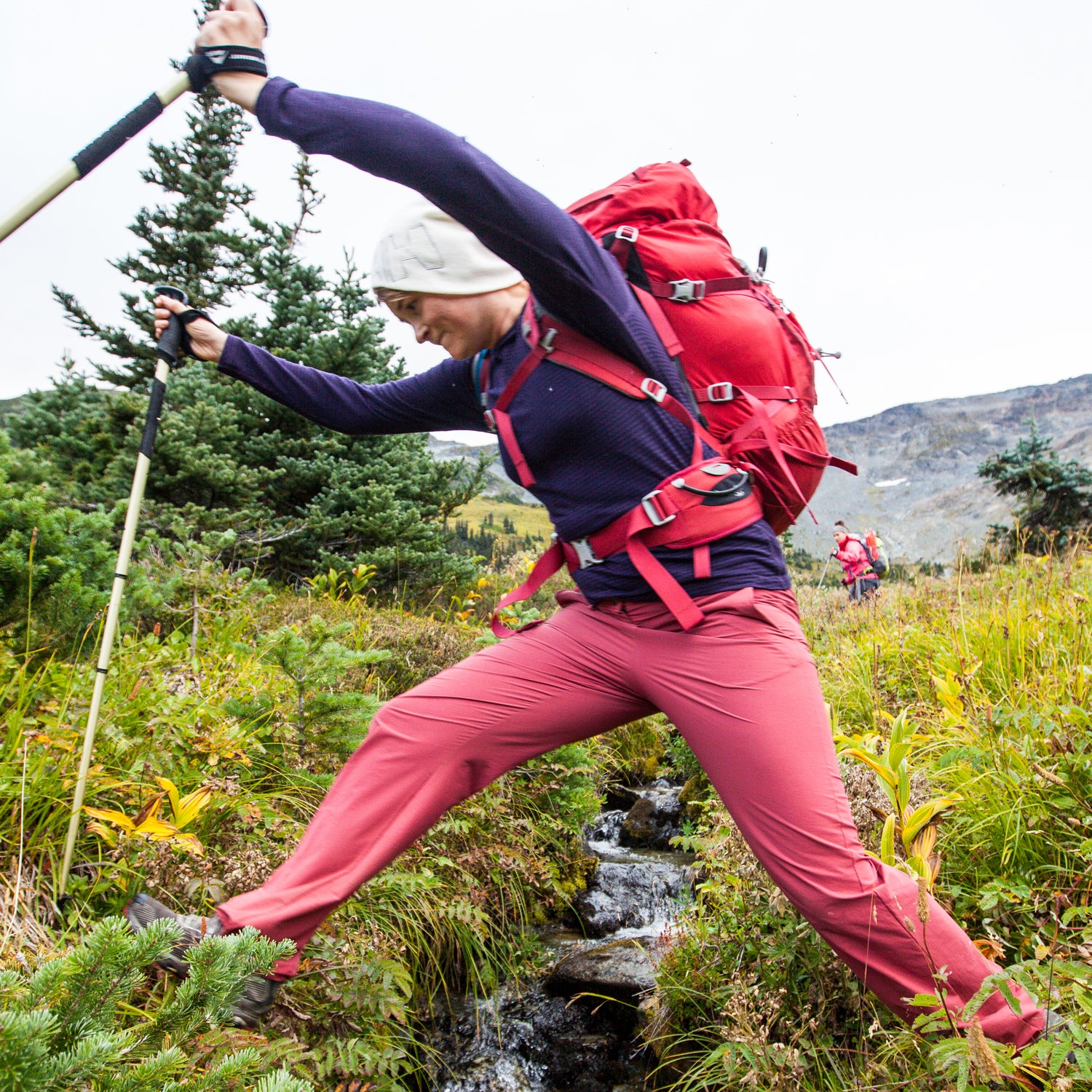Since 2008, the number of people hiking and backpacking in the United States has risen by nearly 50 percent. It’s easy to see why: The sport appeals to everyone from casual outdoorspeople and aspiring adventurers to endurance athletes and longtime dirtbags. You can crush big distances in a short period of time, prioritize the campsite hang, or find a happy medium somewhere in between.
No matter your objective, some prep will help to guarantee you get the most from your trip. And it’s much easier than most people think. We asked Andrew Skurka, a professional adventure athlete known for setting new thru-hiking routes and author of The Ultimate Hiker’s Gear Guide: Tools and Tips to Hit the Trail, for his advice on all you need to do before getting to the trailhead.
Get Fit
Not sure if you’re fit enough to haul your life on your back through the wilderness? Odds are if you’re interested in backpacking, then you’re already hiking, so you should be able to handle an easy-to-moderate backpacking trip. For a summer weekend, expect to carry a pack weighing about one-third of your body weight. To train, grab a bag (ideally the one you’ll be backpacking with) and take it on a day hike. Gradually begin to fill it with heavier objects for longer distances until you reach your expected weight and a length that is close to what you’ll be covering. If you’re starting from scratch, add some extra cardio to your week—short jogs or power walks will get you accustomed to being on your feet for longer. Peppering in some upper-body strength workouts will prep your shoulders to bear all that weight.
Ease Into It
One way to get a feel for backpacking without having to fully commit—and without having to carry everything—is to do a yurt or hut trip. During summer, these locations can be relatively easy to access. Oftentimes, you won’t even need to carry a stove or pots since those are typically provided on-site. To hone your camping skills, like setting up a tent and cooking on a backpacking stove, just go car camping with your backpacking gear. You can stash a few backup items, like a thicker sleeping pad or a two-burner stove in your car and use them only if you find your backpacking gear just isn’t working the way you want it to. Then, learn from the process: Reassess and refine your kit until you feel ready to hit the trail and get a little farther from your backup kit in the car.
Gear Up
Getting all of the gear needed for a backpacking trip can be a daunting process. It can be expensive, and it’s tricky to determine what’s going to be right for your style of backpacking without ever having done it. If you’re up for buying new gear, this nine-piece beginner’s kit is a great place to start.
Another option is used gear. If you live in a community where people are getting out regularly, there is probably some sort of used gear shop or exchange. At the bare minimum, the gear you need is all contained within the now-famous list of the Ten Essentials, originally created by the the Seattle Mountaineers in the 1930s and recently updated by the Mountaineers in their book Mountaineering: The Freedom of the Hills.
- Navigation (map and compass, GPS)
- Sun protection (sunglasses, sunscreen, hat, etc.)
- Insulation (clothing, including rain layers)
- Illumination (headlamp or flashlight)
- First-aid supplies
- Fire (stove, fuel, waterproof matches or lighter, candles)
- Repair kit and tools (knife, duct tape, needle and thread, etc.)
- Nutrition (food and related gear, like a bowl, spork, etc.)
- Hydration (water, water bottle, filter, pump)
- Shelter (tent, tarp, bug net)
Plan, Plan, Plan
We’re used to constant access to information and communication—which means we often don’t have to plan ahead. But in the wilderness, it’s more likely than not that you’ll end up in a place where it’s impossible to load a map. Used to be you had to go to a store and buy a paper map (or two, since rarely did a hike just stick to one map) and plot your route. It’s easier now that you can just download your maps, but you still have to do so before going beyond the reach of a cell tower. Spend some time before you leave mapping out your journey and planning ahead to prepare for those times when you’re totally off the grid.
Aside from navigation, meal planning is key. It helps ensure that you’re not carrying too much or too little food or fuel, and it prevents dangerous situations where you’re without sustenance for too long. Similarly, you’ll want to note the available water sources along your route and do a quick internet search to see if there’s been any chatter about recent conditions being particularly low or dry. Backpacking trips require lots of water for cooking, cleaning, and drinking, so you’ll want comprehensive knowledge of where you can refill.
Stay in Touch
After finishing all the route planning and building an itinerary, leave that information with someone you trust. Then, check in when you get back. This person should know that if they don’t hear from you by a certain time, they need to take action to see if you got into any sort of trouble. Be sure they know what trailhead(s) you’re starting and finishing at, your intended route and campsites, and the make, model, and license plate of your vehicle. This is the information local officials will want to know if they need to look for you. For those who have friends and family expressing deeper concerns, consider taking a satellite messenger unit with you, like one from SPOT or InReach. These units are not bound by cell towers and can send a message of “OK” or “I need help” out to someone. Coverage does vary, so research that before you buy or rent.

